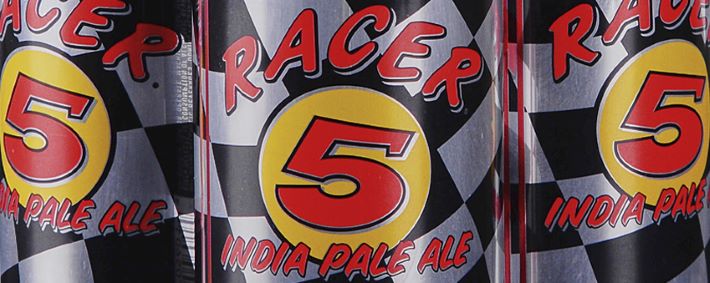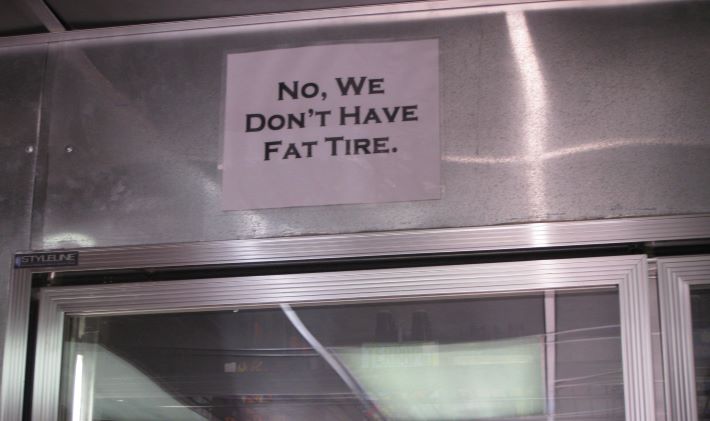
Christchurch, New Zealand

Christchurch, New Zealand

“For drinkers to enjoy the foam, it needs to stick around. Although the foam lasted the longest for the highest temperature and pressure studied, the relationship wasn’t as straightforward as it was for foam formation. For pump pressures of 1 bar and 0.5 bar, the foam stability was higher at the intermediate temperature of 10 °C than at 15 °C.
“The reason is the distribution of bubble sizes. At lower temperatures, the bubbles have a fairly uniform size, but at higher temperatures, the sizes vary. The pressure difference between neighboring large and small bubbles causes the large bubbles to siphon off the small bubbles’ gas until the small bubbles wither away. And thus the foam dissipates faster.”

The beat goes on . . .
Appropriately datelined Plain City, because it could happen anywhere. The story often begins this way. “People started liking my beer. I started winning awards on my beer,” says Pat Winslow. Then there was a crowdfunding drive. “This is way beyond my wildest dreams at that time. I feel really fortunate and very humble to be part of this organization.” What followed was, and is, a business story not easily understood. But Pat Winslow is not longer making beer at the brewery he started.
A ‘dream come true’ that continues to get bigger and bigger. You’ve definitely heard this one before. “I opened this business to be happy with my life. I was working in corporate America. I was sick of being a number and a pawn.”
“I always wanted to do my own thing. It’s kind of every brewer’s dream.” An easy-drinking beers and game-stocked taproom in Houston. The core beers are an IPA, a pilsner, a helles and a hazy IPA. “I’m not doing anything revolutionary. I try to make beers people can drink six of.”
“Traveled the world, fell in love with beer over in Germany and Europe.” You’ve also heard that more than a few times. What’s different is Robert Young III is Black and has plans to open a brewery in Augusta, Georgia, called Tapped 33 [The original post had 13 – Thanks to Dan for the noticing]. “Augusta is located on the 33rd parallel on earth. Prohibition ended in 1933. And then I wanted to tie it back to Augusta, James Brown was born in 1933 as well.”
His Good Googly Moogly was one of the best beers I drank last October at Blacktoberfest in Stone Mountain, Georgia. (You might pause to consider the cultural significance of such an event miles from a park famous for the world-record-size stone engraving of Confederate leaders.) I had a great, if too short, conversation with Young. We didn’t talk about dreams; instead about the beers he has in his head. I wish the attention showered on AI and particularly ChatGPT focused more on what it means to be creative; in the case of beer to imagine how old and new flavors may work together. That’s why I plan to visit Augusta once Tapped 13 is open.
On (beer) writing
– Last Thursday, Alan McLeod suggested are “a few main themes in pub and beer writing: (i) industry writing, (ii) trade friendly writing, (iii) politico-socio justicio writing and (iv) innovative creative writing.** Is there a fifth category worth mentioning?” The details are in the asterisk (don’t be shy, click and scroll). Don’t know if it is a fifth category, but what I miss is the “Link + quick comment” aspect. And comments, definitely comments.
– Jeff Alworth on AI Nightmare Scenarios.
– Robin LeBlanc and Jordan St. John put themselves out to pasture.
– FiveThirtyEight looks beyond the hype. “What do Americans think AI is good for? Recipes, roadside assistance and coal mining.”
– The best story I’ve read so far about how ChatGPT works and its relationship to the original writing humans sometimes do. “Our first draft isn’t an unoriginal idea expressed clearly; it’s an original idea expressed poorly, and it is accompanied by your amorphous dissatisfaction, your awareness of the distance between what it says and what you want it to say. That’s what directs you during rewriting, and that’s one of the things lacking when you start with text generated by an A.I.”

Remember Flagship February?
Stephen Beaumont and Jay Brooks started it in 2019 and it continued for two more years, because “Our thinking is that flagship beers have much to teach new drinkers and remind older drinkers, and if they fall off the radar so far that they disappear completely, we will all be that much poorer for it.”
(You hit the second of those two icons on the right of any page at the site and you can scroll through the full list of featured beers. I wrote about Fat Tire in 2019. Humbling.)
I mention this today not because it is February, but because Brooks posted a bit of a scoop yesterday about a merger between Bear Republic Brewing and Drake’s Brewing.
Within in you will find this tidbit: Bear Republic’s Racer 5 accounts for 92 percent of the brewery’s sales. That’s a stunning number.
Brewer Rich Norgrove wrote about Racer 5 in Flagship February Year III, including that to “many Racer 5 IPA is more than just some award-winning West Coast style IPA; it’s the first beer they shared with friends, an adventure in discovery.”
It would appear they shared it a second and perhaps third time as well.
Why do people suddenly care about Fat Tire?
OK, maybe they don’t really. I found this tasting note from John Frank at Axios Denver telling:
Fat Tire is like an old friend. You can immediately connect, even if it’s been too long since you last visited.
- The original pours a beautiful copper hue, easy-going with caramel and nut flavors that remind you it once counted as full-flavored craft beer.
- While well-made, the remake is uninspiring. It has a Honey Nut Cheerios aroma, and the flavors of sweet cereal that finish less satisfyingly.
The bottom line: You can probably drink more of them, but do you want to?
. . . even if it’s been too long since you last visited.
I spent more time Tuesday looking at Twitter than I have in the last two weeks, maybe a month, working my way through various threads, wondering when those commenting last drank Fat Tire, or why they spent so much time typing words about the can, or if the rebrand will help New Belgium recharge Fat Tire, or in another words if “high quality, low impact” (a reference to the beer’s zero-emissions production process) will create more connections than “Follow your Folly” once did, or why a brewery should be obligated to make a legacy beer exactly like it always has even if it quit using the exact same ingredients maybe two decades ago, or for that matter exactly what a legacy beer beer is, or . . . whew . . . exhausting.

This was taken in 2009 at a beer store in Charleston, S.C., a few days before New Belgium Brewing began selling beer in North Carolina. As the company had since 2006, when it started selling beer west of the Mississippi, it offered three brands in 22-ounce bottles — Fat Tire Amber Ale, 1554 Black Lager and Mothership Wit. Two weeks later they would launch the same three brands on draft, following with six-packs about a month later.
We arrived in North Carolina March 2, the day Fat Tire went on sale. We visited a package store the next day. Neat stacks of 1554 and Mothership Wit remained piled as high as an elephant’s eye. The Fat Tire was gone.
In 2009, Fat Tire accounted for 70 percent of New Belgium sales and it fueled expansion. Many customers thought Fat Tire was the name of the brewery, and the Fort Collins, Colorado, post office regularly delivered mail addressed to Fat Tire Brewery.
(I wrote about this in 2019, supplementing more words for #FlagshipFebruary, a project initiated by Stephen Beaumont and Jay Brooks.)
This did not happen by accident. After an early romance with drinkers when the company began selling its beers in the Northwest in 2002, New Belgium Brewing discovered the grass-roots relationship marketing, closely tied to cycling and love for the outdoors, that had worked close to its Colorado base could not be replicated in Oregon and Washington. When sales fell, New Belgium turned to marketing consultants Douglas Holt and Douglas Cameron. Those two outline and explain the strategy they developed in a chapter called “Fat Tire: Crossing the Cultural Chasm” within their book, “Cultural Strategy: Using Innovative Ideologies to Build Breakthrough Brands.”
Cliff Notes version, there was a tagline and a commercial. New Belgium used the tagline, “Follow Your Folly, Ours is Beer,” for at least 10 years after it was introduced in 2003. “We wanted to say ‘here’s the kind of ideology we aspire to, we celebrate all those who pursue the same kind of thing, and this is exactly the ideology that is at the heart of our brewery and the beer we are drinking,” the authors explain in “Cultural Strategy.”
The commercial featured a character they called The Tinkerer. He finds an old bicycle at a garage sale, carefully restores it and then happily rides it into the Colorado countryside. I think there was more than one iteration, and this is the one I found on YouTube . . .
Twenty years ago this commercial reflected a DIY ethos that had been central to brewery startups for 20 years by then. Of course, there was also the Fat Tire bicycle connection.
It was good marketing.
It is much easier to judge such things looking in the rear view mirror. I think I will leave it at that.